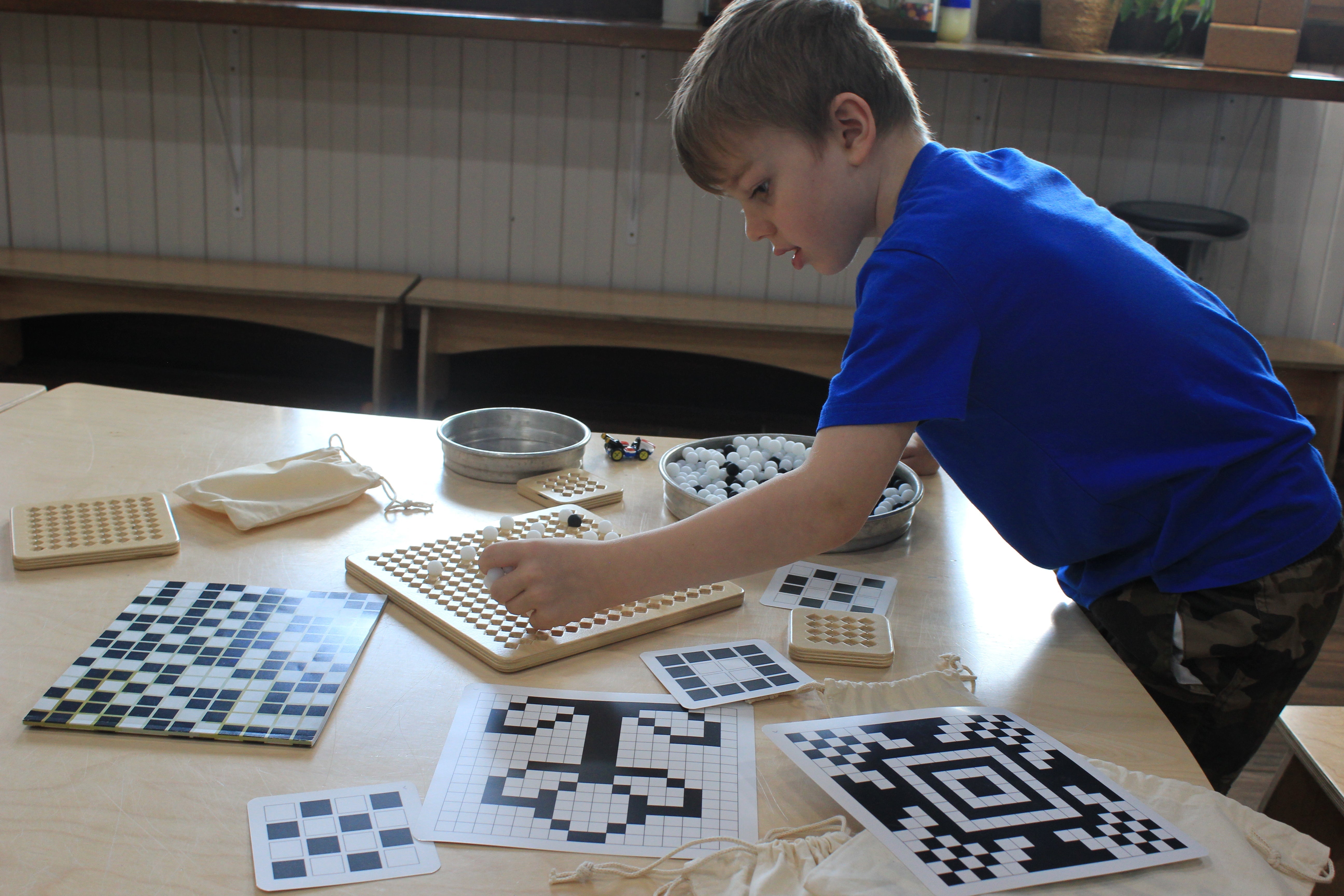At Kodo Kids, we believe children are natural problem solvers. Whether they’re stacking blocks, arranging loose parts, or telling stories in sequence, early play is filled with moments that mirror computational thinking.
What is Computational Thinking?
Computational thinking begins with big ideas made accessible through play. In early childhood, this includes foundational concepts like:
-
Patterning: The ability to recognize, predict, and create repeating sequences. Patterning supports early math and logic development and helps children build a sense of order in the world around them.
-
Representation: Using symbols, objects, or drawings to stand in for something else. This allows children to make sense of abstract ideas—like using a block to represent a button or arranging objects to stand for binary code.
-
Coding: At its simplest, coding is creating a sequence of instructions to complete a task. In early learning, this might look like giving directions to a friend, following steps in a song, or laying out a path for a marble.
-
Number Systems: Understanding quantity, order, and the relationships between numbers. Exploring number systems helps children develop early computational fluency—especially when paired with tactile materials like counters, grids, or pixel boards.
A Beautiful Way to Learn
We’re thrilled to announce our partnership with Learning Beautiful, offering a new collection of screen-free, Montessori-aligned materials designed to bring computational thinking to life in early learning environments.
These thoughtfully designed tools crafted from sustainable materials introduce concepts like coding, abstraction, patterning, and number systems using natural materials designed by experts at the MIT Media Lab.
The Learning Beautiful Classroom Set is ideal for educators looking to introduce computational thinking into their classrooms utilizing the designed materials for small group work and centers. This set supports teachers with a complete book of activity plans that support playful learning for children to explore patterning, representation, coding, and number systems.
The Learning Beautiful Learning at Home Set offers families a way to bring a screen-free, playful, and fun way to introduce computational thinking at home with a guide with over 30 lessons for children ages 3-9.
Play as a Pathway
Computational thinking isn’t about technology-it’s about the way children think. By nurturing curiosity, encouraging experimentation, and supporting resilience through hands-on materials, educators lay the foundation for lifelong problem solving.
Learn More
Want to dig deeper into Learning Beautiful? Join us on June 18, 2025 as we chat with Kim Smith Claudel, Learning Beautiful Co-Founder, to learn more about computational thinking, the materials, and computer science in early childhood.

Share:
Rolling into Literacy: Ramps, Construction Play, and Mighty, Mighty Construction Site
Building Belonging Through Play: Our Partnership with The Third Place for Kids